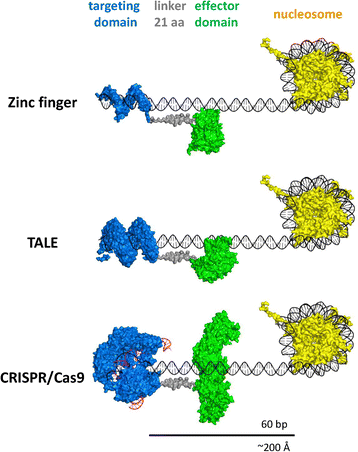Synthetic epigenetics-towards intelligent control of epigenetic states and cell identity
- PMID: 25741388
- PMCID: PMC4347971
- DOI: 10.1186/s13148-015-0044-x
Synthetic epigenetics-towards intelligent control of epigenetic states and cell identity
Abstract
Epigenetics is currently one of the hottest topics in basic and biomedical research. However, to date, most of the studies have been descriptive in nature, designed to investigate static distribution of various epigenetic modifications in cells. Even though tremendous amount of information has been collected, we are still far from the complete understanding of epigenetic processes, their dynamics or even their direct effects on local chromatin and we still do not comprehend whether these epigenetic states are the cause or the consequence of the transcriptional profile of the cell. In this review, we try to define the concept of synthetic epigenetics and outline the available genome targeting technologies, which are used for locus-specific editing of epigenetic signals. We report early success stories and the lessons we have learned from them, and provide a guide for their application. Finally, we discuss existing limitations of the available technologies and indicate possible areas for further development.
Keywords: CRISPR; Cell fate; Epigenetic editing; Epigenetics; Synthetic epigenetics; TALE; Targeted epigenome modification; Zinc fingers.
Figures


References
-
- Gurdon J. Nuclear reprogramming in eggs. Nat Med. 2009;15(10):1141–4. - PubMed
-
- Waddington CH. The strategy of the genes; a discussion of some aspects of theoretical biology. London: Allen & Unwin; 1957.
-
- Consortium EP. The ENCODE (ENCyclopedia Of DNA Elements) Project. Science. 2004;306(5696):636–40. - PubMed
LinkOut - more resources
Full Text Sources
Other Literature Sources

